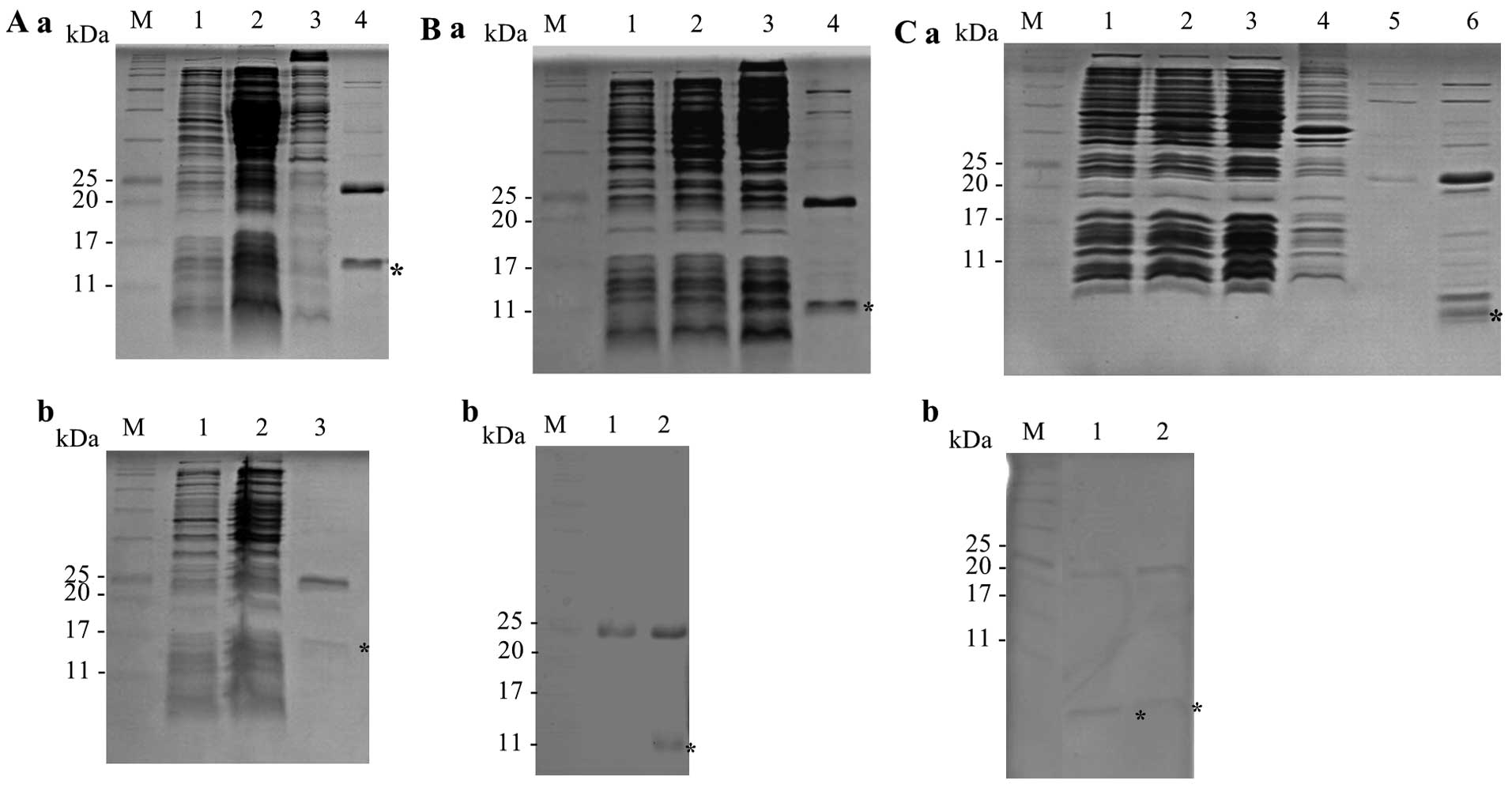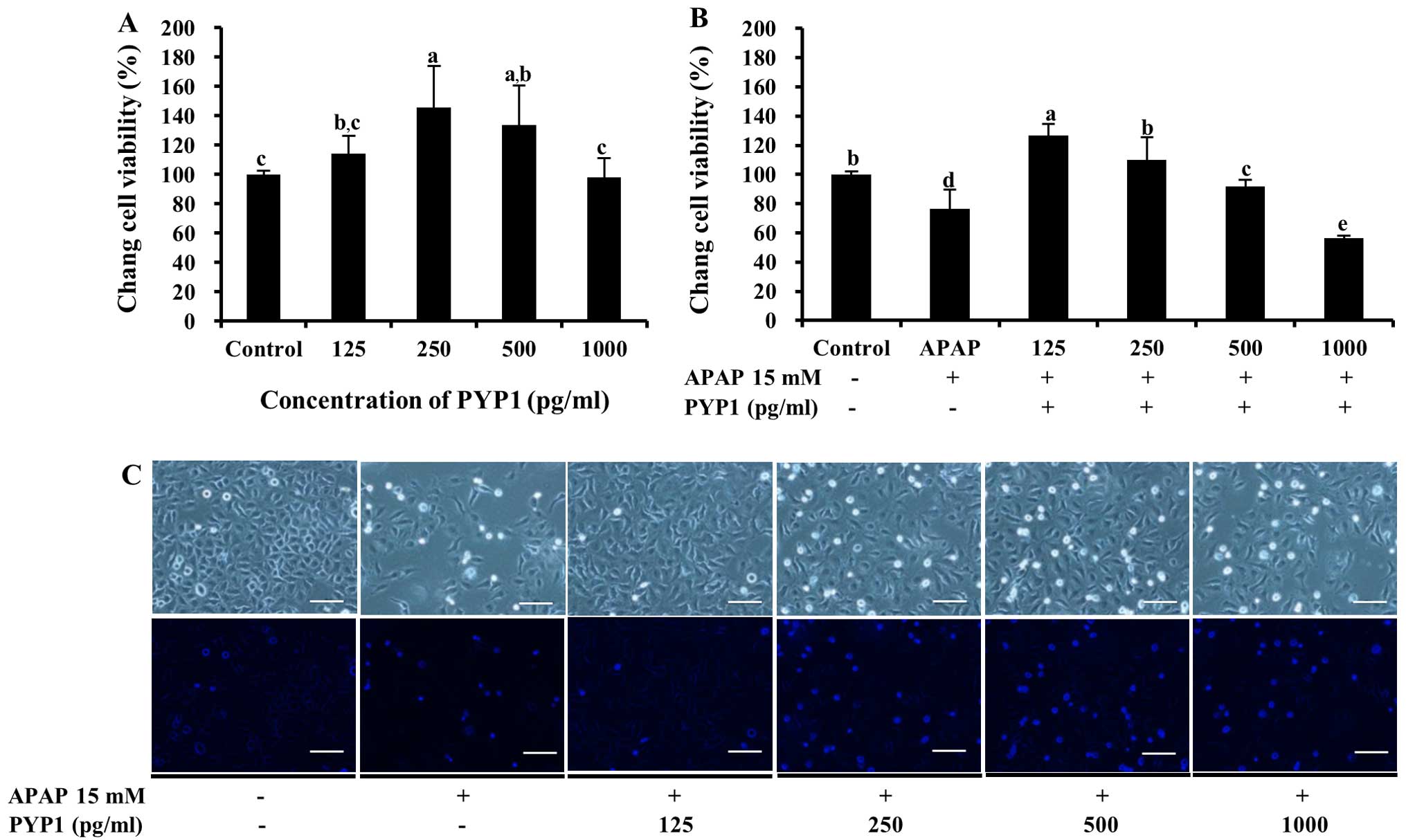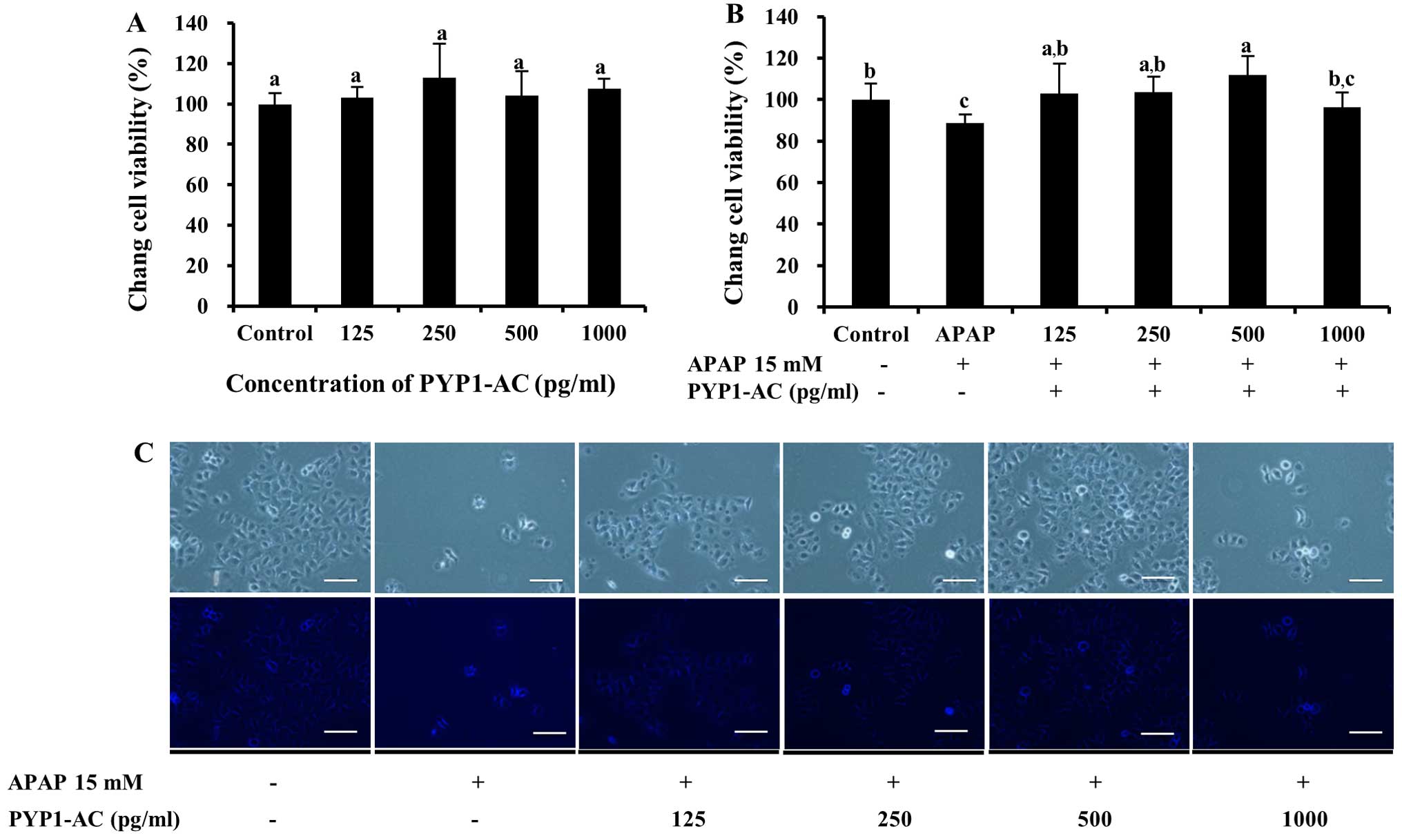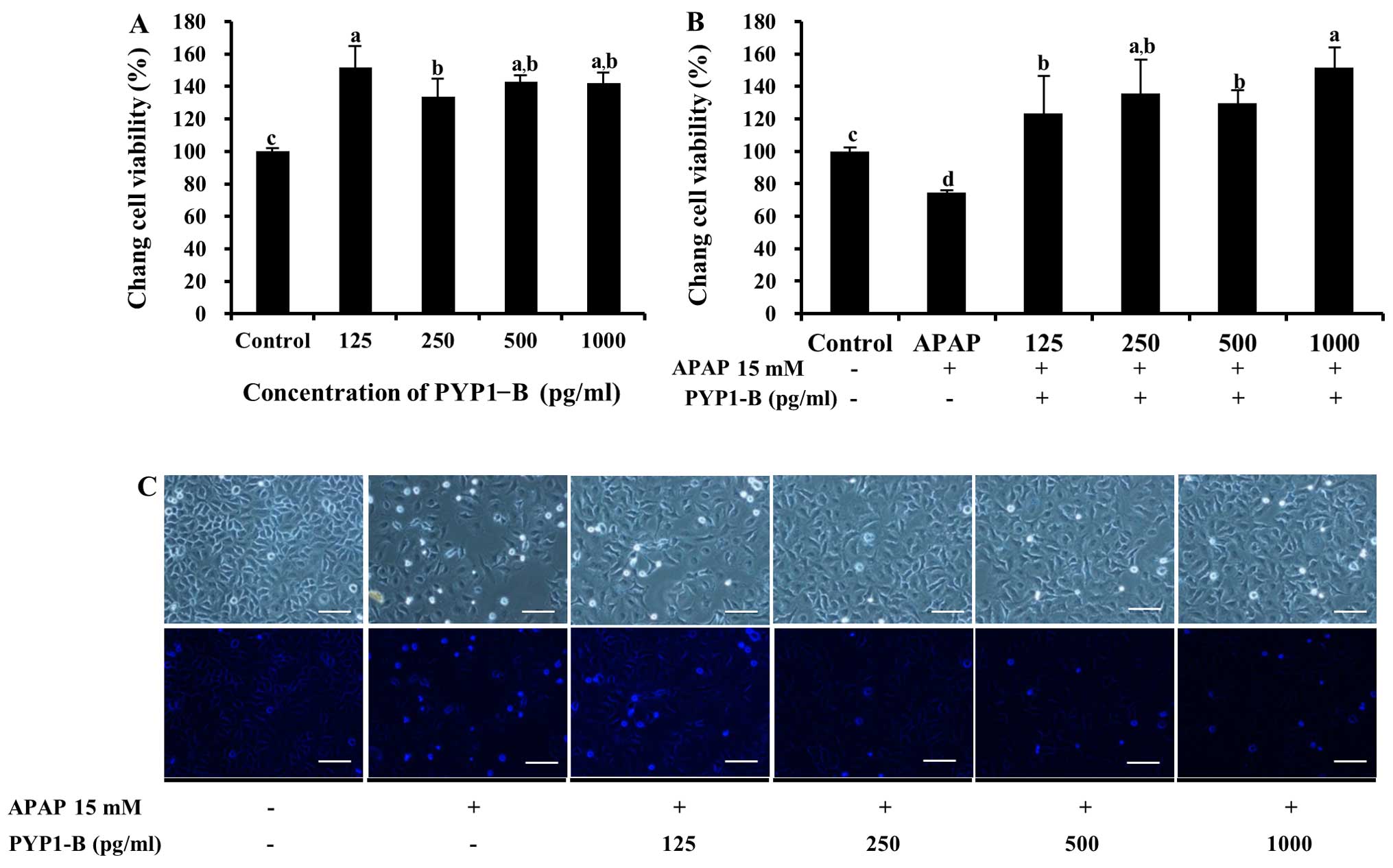|
1
|
Mohamed S, Hashim SN and Rahman HA:
Seaweeds: A sustainable functional food for complementary and
alternative therapy. Trends Food Sci Technol. 23:83–96. 2012.
View Article : Google Scholar
|
|
2
|
Maeda H, Hosokawa M, Sashima T, Funayama K
and Miyashita K: Fucoxanthin from edible seaweed, Undaria
pinnatifida, shows antiobesity effect through UCP1 expression in
white adipose tissues. Biochem Biophys Res Commun. 332:392–397.
2005. View Article : Google Scholar : PubMed/NCBI
|
|
3
|
Colliec S, Fischer AM, Tapon-Bretaudiere
J, Boisson C, Durand P and Jozefonvicz J: Anticoagulant properties
of a fucoidan fraction. Thromb Res. 64:143–154. 1991. View Article : Google Scholar : PubMed/NCBI
|
|
4
|
Funahashi H, Imai T, Mase T, Sekiya M,
Yokoi K, Hayashi H, Shibata A, Hayashi T, Nishikawa M, Suda N, et
al: Seaweed prevents breast cancer? Jpn J Cancer Res. 92:483–487.
2001. View Article : Google Scholar : PubMed/NCBI
|
|
5
|
Hwang HJ, Kim IH and Nam TJ: Effect of a
glycoprotein from Hizikia fusiformis on acetaminophen-induced liver
injury. Food Chem Toxicol. 46:3475–3481. 2008a. View Article : Google Scholar
|
|
6
|
Choi EY, Hwang HJ, Kim IH and Nam TJ:
Protective effects of a polysaccharide from Hizikia fusiformis
against ethanol toxicity in rats. Food Chem Toxicol. 47:134–139.
2009. View Article : Google Scholar
|
|
7
|
Shin ES, Hwang HJ, Kim IH and Nam TJ: A
glycoprotein from Porphyra yezoensis produces anti-inflammatory
effects in liposaccharide-stimulated macrophages via the TLR4
signaling pathway. Int J Mol Med. 28:809–815. 2011.PubMed/NCBI
|
|
8
|
Hwang HJ, Kwon MJ, Kim IH and Nam TJ:
Chemoprotective effects of a protein from the red algae Porphyra
yezoensis on acetaminophen-induced liver injury in rats. Phytother
Res. 22:1149–1153. 2008b. View
Article : Google Scholar
|
|
9
|
Lee WM: Acetaminophen and the U.S. Acute
Liver Failure Study Group: Lowering the risks of hepatic failure.
Hepatology. 40:6–9. 2004. View Article : Google Scholar : PubMed/NCBI
|
|
10
|
Shon YH and Nam KS: Protective effect of
moutan cortex extract on acetaminophen-induced cytotoxicity in
human Chang liver cells. Biol Pharm Bull. 25:1427–1431. 2002.
View Article : Google Scholar : PubMed/NCBI
|
|
11
|
Rajaraman G, Chen J and Chang TKH:
Ginkgolide A contributes to the potentiation of acetaminophen
toxicity by Ginkgo biloba extract in primary cultures of rat
hepatocytes. Toxicol Appl Pharmacol. 217:225–233. 2006. View Article : Google Scholar : PubMed/NCBI
|
|
12
|
Hwang HJ, Kwon MJ and Nam TJ:
Chemoprotective effect of insulin-like growth factor I against
acetaminophen-induced cell death in Chang liver cells via ERK1/2
activation. Toxicology. 230:76–82. 2007. View Article : Google Scholar
|
|
13
|
Gong Y, Wang G, Gong Y, Yan J, Chen Y and
Burczynski FJ: Hepatoprotective role of liver fatty acid binding
protein in acetaminophen induced toxicity. BMC Gastroenterol.
14:442014. View Article : Google Scholar : PubMed/NCBI
|
|
14
|
Ray SD, Kumar MA and Bagchi D: A novel
proanthocyanidin IH636 grape seed extract increases in vivo Bcl-XL
expression and prevents acetaminophen-induced programmed and
unprogrammed cell death in mouse liver. Arch Biochem Biophys.
369:42–58. 1999. View Article : Google Scholar : PubMed/NCBI
|
|
15
|
Cover C, Fickert P, Knight TR,
Fuchsbichler A, Farhood A, Trauner M and Jaeschke H:
Pathophysiological role of poly(ADP-ribose) polymerase (PARP)
activation during acetaminophen-induced liver cell necrosis in
mice. Toxicol Sci. 84:201–208. 2005. View Article : Google Scholar
|
|
16
|
Oliveira FA, Chaves MH, Almeida FRC, Lima
RCP Jr, Silva RM, Maia JL, Brito GAAC, Santos FA and Rao VS:
Protective effect of α- and β-amyrin, a triterpene mixture from
Protium heptaphyllum (Aubl.) March. trunk wood resin, against
acetaminophen-induced liver injury in mice. J Ethnopharmacol.
98:103–108. 2005. View Article : Google Scholar : PubMed/NCBI
|
|
17
|
Raghavendran HRB, Sathivel A and Devaki T:
Protective effect of Sargassum polycystum (brown alga) against
acetaminophen-induced lipid peroxidation in rats. Phytother Res.
19:113–115. 2005. View
Article : Google Scholar : PubMed/NCBI
|
|
18
|
Choi YH, Yamaguchi K, Oda T and Nam TJ:
Chemical and mass spectrometry characterization of the red alga
Pyropia yezoensis chemoprotective protein (PYP): Protective
activity of the N-terminal fragment of PYP1 against
acetaminophen-induced cell death in Chang liver cells. Int J Mol
Med. 35:271–276. 2015.
|
|
19
|
Uji T, Hirata R, Mikami K, Mizuta H and
Saga N: Molecular characterization and expression analysis of
sodium pump genes in the marine red alga Porphyra yezoensis. Mol
Biol Rep. 39:7973–7980. 2012. View Article : Google Scholar : PubMed/NCBI
|
|
20
|
Battaglia M, Olvera-Carrillo Y,
Garciarrubio A, Campos F and Covarrubias AA: The enigmatic LEA
proteins and other hydrophilins. Plant Physiol. 148:6–24. 2008.
View Article : Google Scholar : PubMed/NCBI
|
|
21
|
Blouin NA, Brodie JA, Grossman AC, Xu P
and Brawley SH: Porphyra: a marine crop shaped by stress. Trends
Plant Sci. 16:29–37. 2011. View Article : Google Scholar
|
|
22
|
Xie Y, McGill MR, Dorko K, Kumer SC,
Schmitt TM, Forster J and Jaeschke H: Mechanisms of
acetaminophen-induced cell death in primary human hepatocytes.
Toxicol Appl Pharmacol. 279:266–274. 2014. View Article : Google Scholar : PubMed/NCBI
|
|
23
|
Fan YJ, Rong Y, Li PF, Dong WL, Zhang DY,
Zhang L and Cui MJ: Genistein protection against
acetaminophen-induced liver injury via its potential impact on the
activation of UDP-glucuronosyltransferase and antioxidant enzymes.
Food Chem Toxicol. 55:172–181. 2013. View Article : Google Scholar : PubMed/NCBI
|
|
24
|
Ramachandran A, Lebofsky M, Weinman SA and
Jaeschke H: The impact of partial manganese superoxide dismutase
(SOD2)-deficiency on mitochondrial oxidant stress, DNA
fragmentation and liver injury during acetaminophen hepatotoxicity.
Toxicol Appl Pharmacol. 251:226–233. 2011. View Article : Google Scholar : PubMed/NCBI
|
|
25
|
Park SJ, Ryu J, Kim IH, Choi YH and Nam
TJ: Induction of apoptosis by a peptide from Poryphyra yezoensis:
Regulation of the insulin-like growth factor I receptor signaling
pathway in MCF-7 cells. Int J Oncol. 45:1011–1016. 2014.PubMed/NCBI
|
|
26
|
Lee MK, Kim IH, Choi YH and Nam TJ: A
peptide from Porphyra yezoensis stimulates the proliferation of
IEC-6 cells by activating the insulin-like growth factor I receptor
signaling pathway. Int J Mol Med. 35:533–538. 2015.
|
|
27
|
Lee MK, Kim IH, Choi YH, Choi JW, Kim YM
and Nam TJ: The proliferative effects of Pyropia yezoensis peptide
on IEC-6 cells are mediated through the epidermal growth factor
receptor signaling pathway. Int J Mol Med. 35:909–914.
2015.PubMed/NCBI
|
|
28
|
Harnedy PA and FitzGerald RJ: Bioactive
proteins, peptides, and amino acids from macroalgae. J Phycol.
47:218–232. 2011. View Article : Google Scholar
|
|
29
|
Murray BA and FitzGerald RJ: Angiotensin
converting enzyme inhibitory peptides derived from food proteins:
Biochemistry, bioactivity and production. Curr Pharm Des.
13:773–791. 2007. View Article : Google Scholar : PubMed/NCBI
|
|
30
|
Morse ANC: GABA-mimetic peptides form
marine algae and cyanobacteria as potential diagnostic and
therapeutic agents. Bioactive Compounds From Marine Organisms -
With emphasis on the Indian Ocean. Thompson MF, Sarojini R and
Nagabhushanam R: Oxford & IBH Publishing Co.; New Delhi, India:
pp. 167–172. 1991
|
|
31
|
Suetsuna K: Purification and
identification of angiotensin I-converting enzyme inhibitors from
the red alga Porphyra yezoensis. J Mar Biotechnol. 6:163–167.
1998.PubMed/NCBI
|
|
32
|
Saito M and Hagino H: Antihypertensive
effect of oligopeptides derived from nori (Porphyra yezoensis) and
Ala-Lys-Tyr-Ser-Tyr in rats. J Jpn Soc Nutr Food Sci. 58:177–184.
2005. View Article : Google Scholar
|
|
33
|
Suetsuna K and Saito M: Enzyme-decomposed
materials of laver and uses thereof. US Patent 6217879B1. April
17–2001
|
















